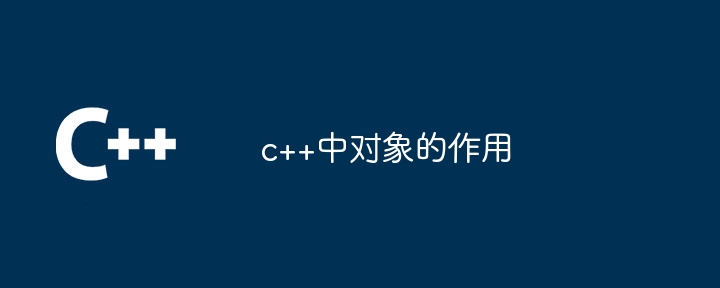
Objects in C encapsulate data into entities that contain data (member variables) and methods for operating data (member functions). The purpose is to: encapsulate data and protect the data from accidental access or modification. Manage data, use member variables to store data and use member functions to manipulate data. Implement polymorphism, allowing different types of objects to be manipulated through base class or interface pointers. Enable code reuse and simplify code development. Organizing complexity, breaking down complex systems into smaller units. Improve code maintainability and centrally modify data and behavior in objects.

Object in C
The role of the object:
A C object is an encapsulation of data, including data (member variables) and methods for operating data (member functions).
Specific expansion:
Example:
class Person {
private:
string name;
int age;
public:
Person(string n, int a) : name(n), age(a) {}
string getName() const { return name; }
int getAge() const { return age; }
void printInfo() const {
cout << "Name: " << name << ", Age: " << age << endl;
}
};In this example, the Person class defines an object that contains name and age data and member functions for accessing and manipulating the data.
The above is the detailed content of The role of objects in c++. For more information, please follow other related articles on the PHP Chinese website!
 What are the differences between c++ and c language
What are the differences between c++ and c language
 Recommended learning order for c++ and python
Recommended learning order for c++ and python
 Cost-effectiveness analysis of learning python and c++
Cost-effectiveness analysis of learning python and c++
 Is c language the same as c++?
Is c language the same as c++?
 Which is better to learn first, c language or c++?
Which is better to learn first, c language or c++?
 The difference and connection between c language and c++
The difference and connection between c language and c++
 C++ software Chinese change tutorial
C++ software Chinese change tutorial
 Cost-effectiveness analysis of learning python, java and c++
Cost-effectiveness analysis of learning python, java and c++




